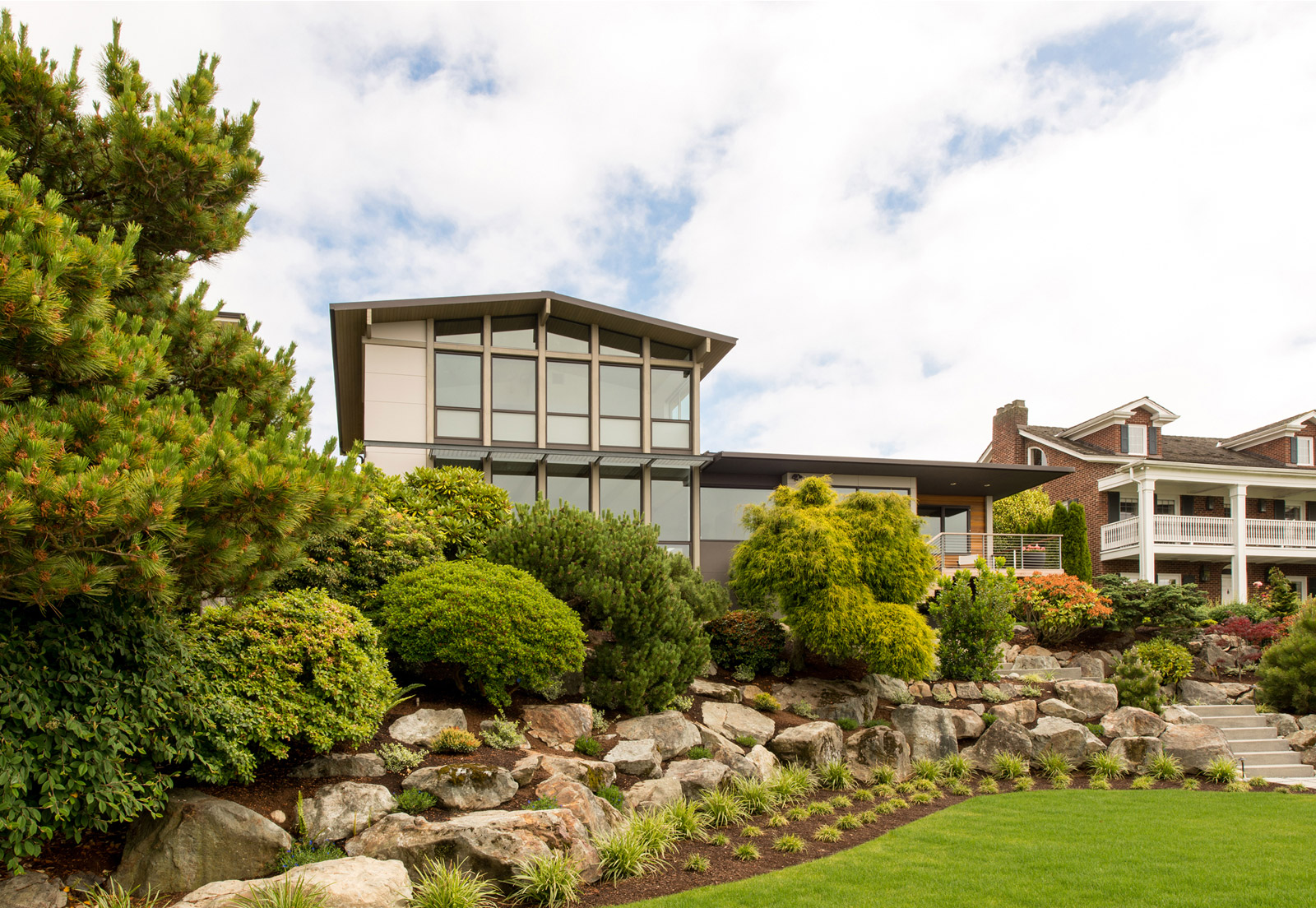
[All images by BUILD LLC]
If you follow the BUILDblog, you know that in addition to being loyal modernists, we love our shed roofs. The shed roof is one of the cleanest and most functional geometries for a roof structure. Shed roofs let an abundance of light into a structure, they keep the framing simple, and they replace impractical attic space with interior volume.

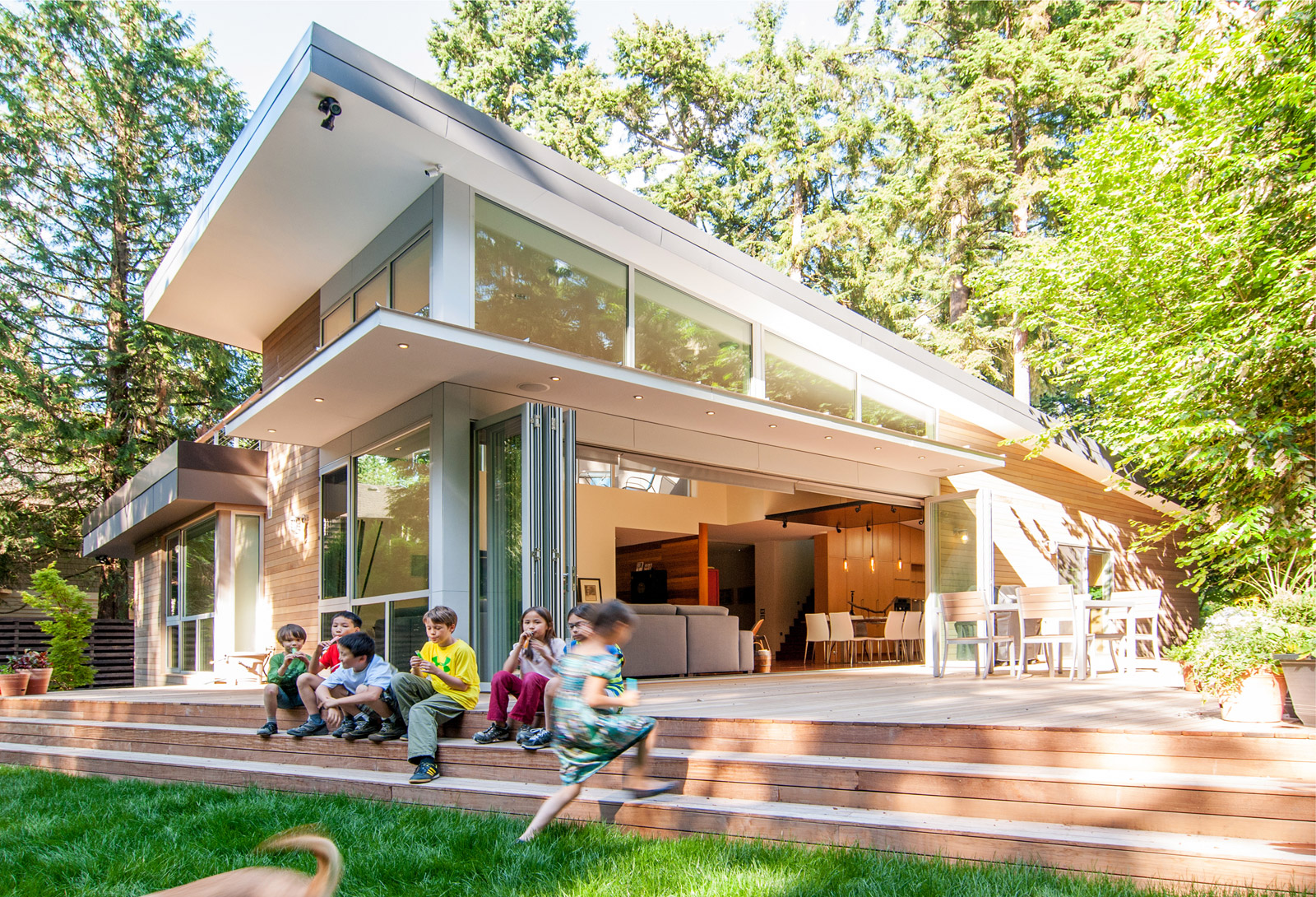
The geometry has served us well on many projects, developing a design-forward aesthetic with the exterior while creating airy, light-filled spaces at the interior. That said, the shed roof isn’t always the right answer in modern design.
To us, modernism is based on an authenticity of function and form. When we’re tackling a design, we evaluate the exterior massing and interior volumes unique to each project. Quite often, this process results in the shed roof geometry, but lately we’ve discovered a few anomalies. A couple of recent projects have challenged our thinking in this area and we’re finding that the shed roof isn’t always the appropriate roof geometry. We’ve boiled down our thoughts on the subject and we’ve paired them with images from two projects — one recently completed and one currently in design.
Shed roofs have a direct relationship with interior ceiling heights and because of this, the length of a shed roof can be a significant limiting factor. The longer the run of a shed roof, the taller and/or shorter the interior volume must become. Ceiling heights taller than twelve feet can feel too vast, whereas ceiling heights lower than eight feet seem a bit cramped. There’s a healthy proportion in the middle, and sometimes a shed roof simply can’t accommodate it.
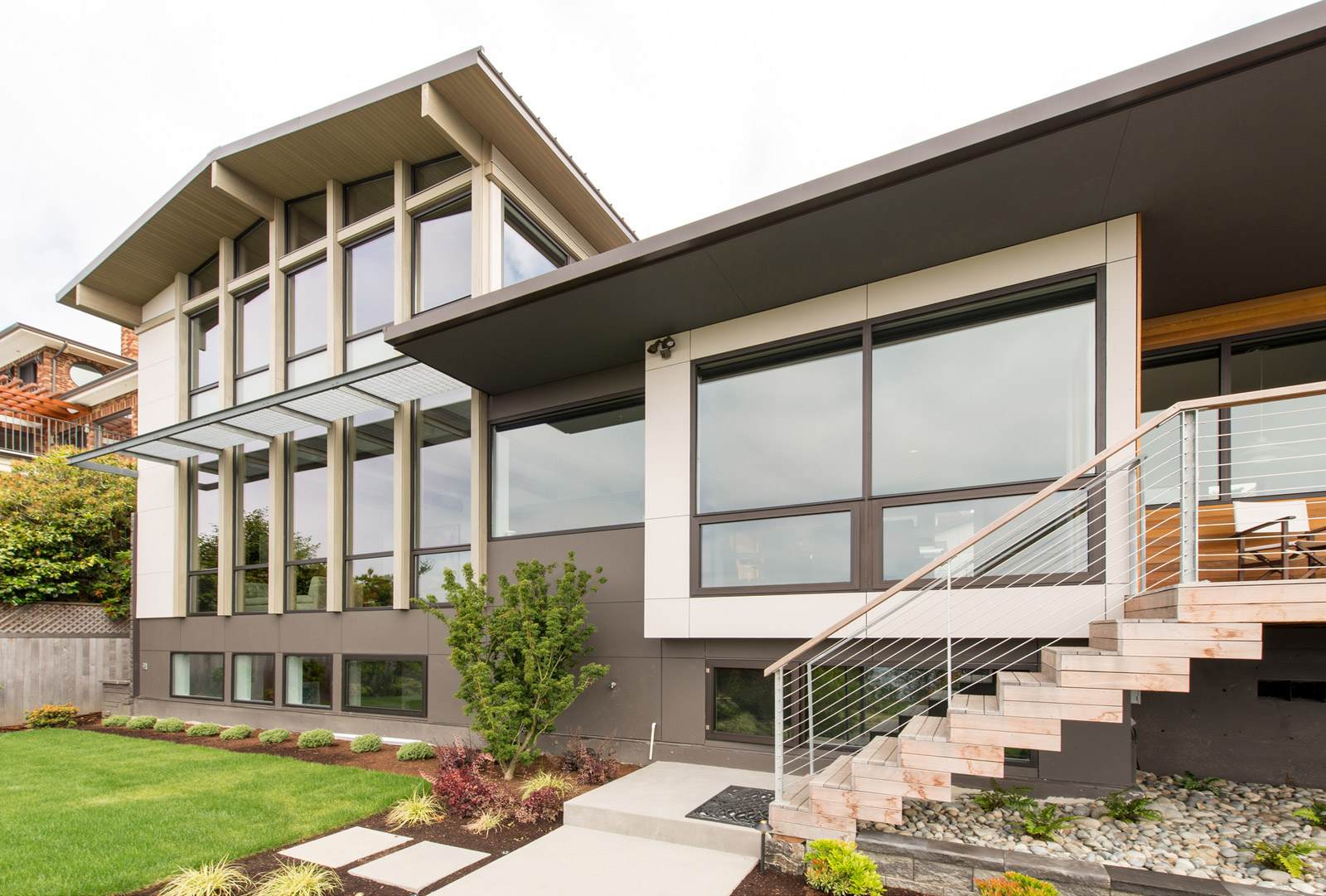
A shed roof would have created uncomfortably tall ceiling heights within the upper level of the recently completed Magnolia Residence, shown above. Instead, the A-frame roof structure allows the airiness of a vaulted ceiling while maintaining an intimate scale at the master suite.
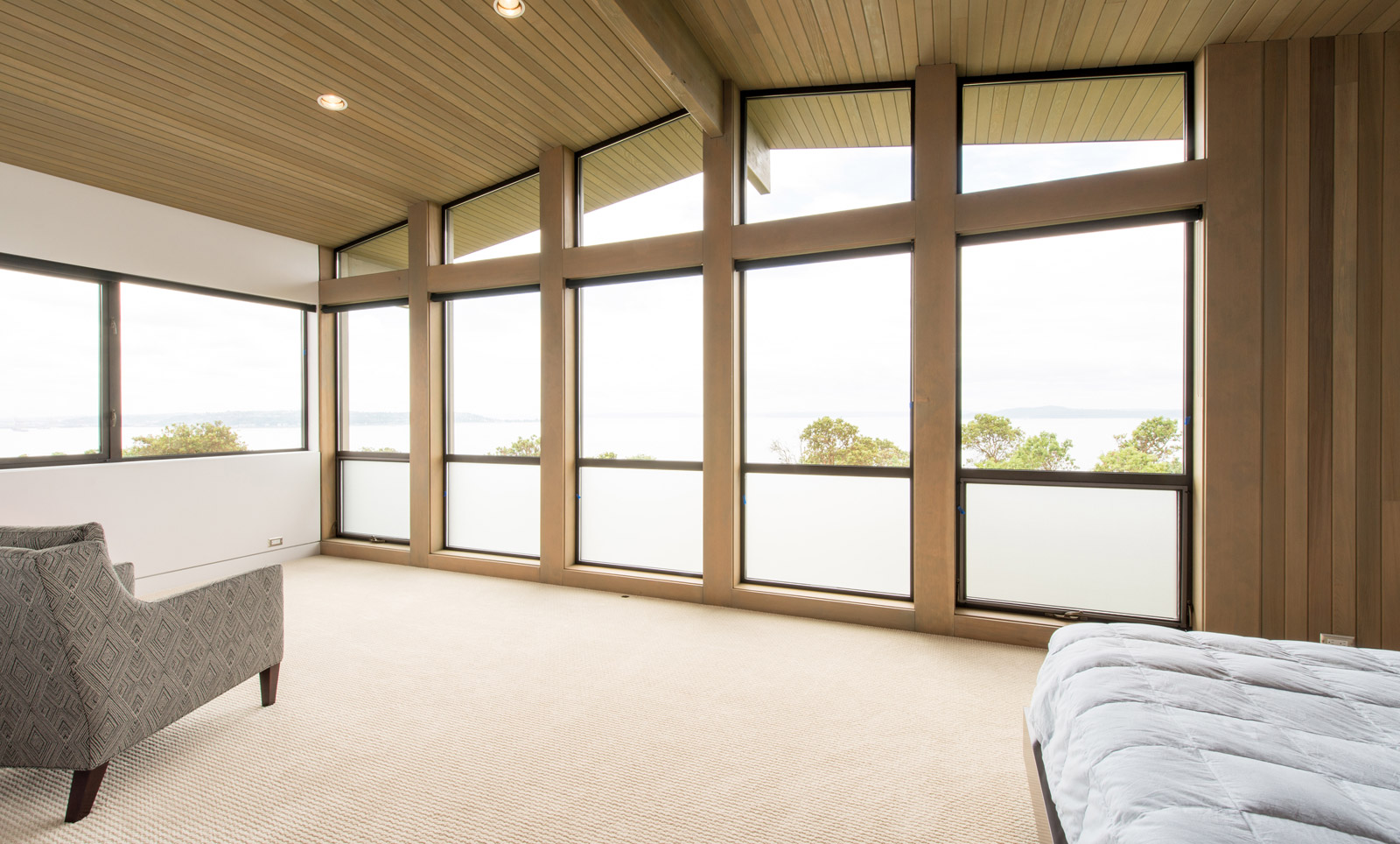
The vaulted ceiling is further enhanced with exposed beams and a light stained cedar lid which continues through to the exterior soffit. Dropping the beam structure also allows the windows to extend fully to the ceiling, enhancing the modern lines.
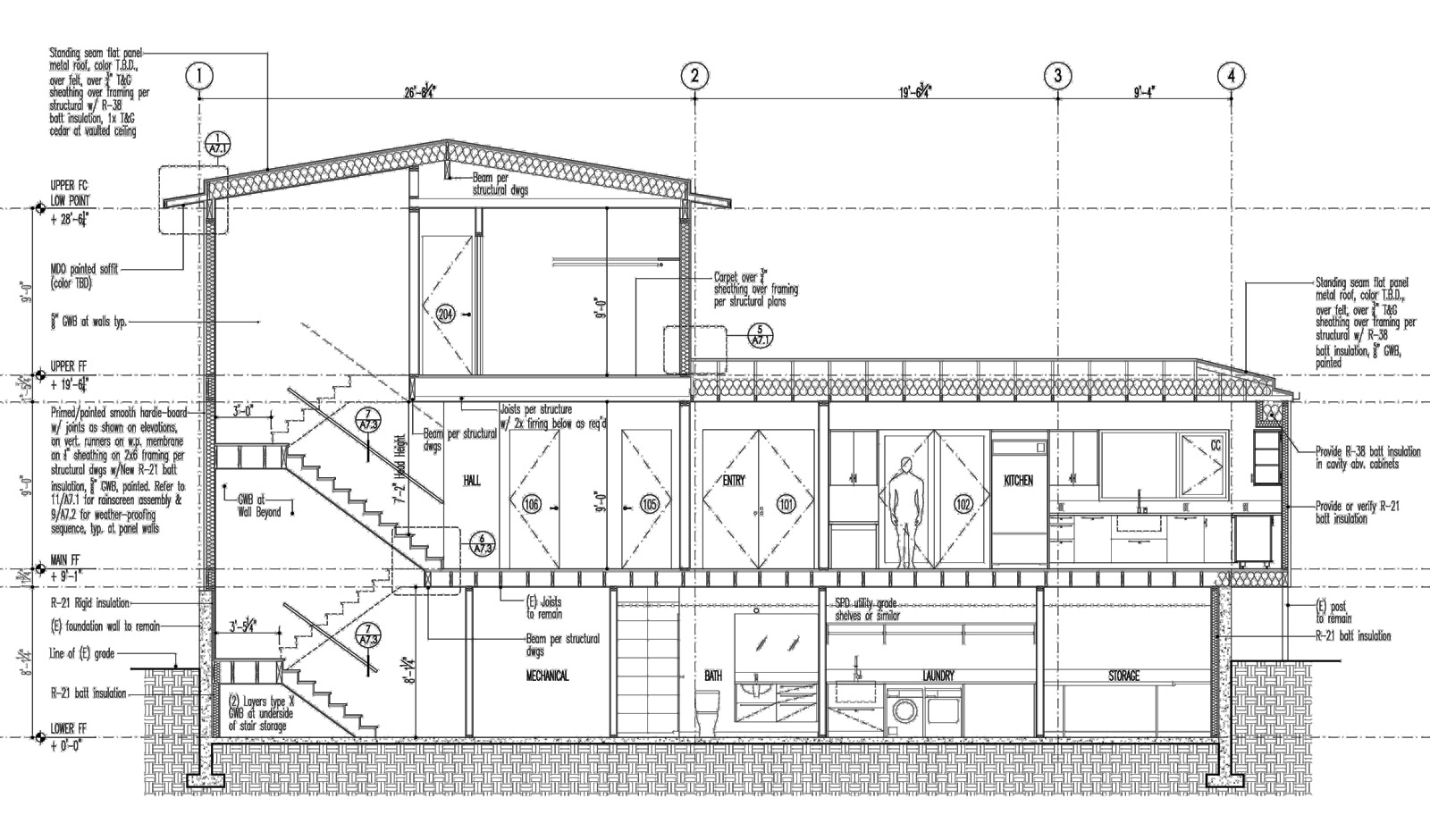
Keeping an attenuated roof eave on this project was important to the overall design. The elevation would have looked too chunky with the full 14” roof depth extending out. We cooked up a new detail that thins the roof profile while still providing all of the function of an eave. The roof joists/trusses terminate above the exterior walls and 2×4 extensions are then sistered onto the joists. These thinner roof eaves shade the house, shield the windows & doors, and provide a protected location for the roof vents.
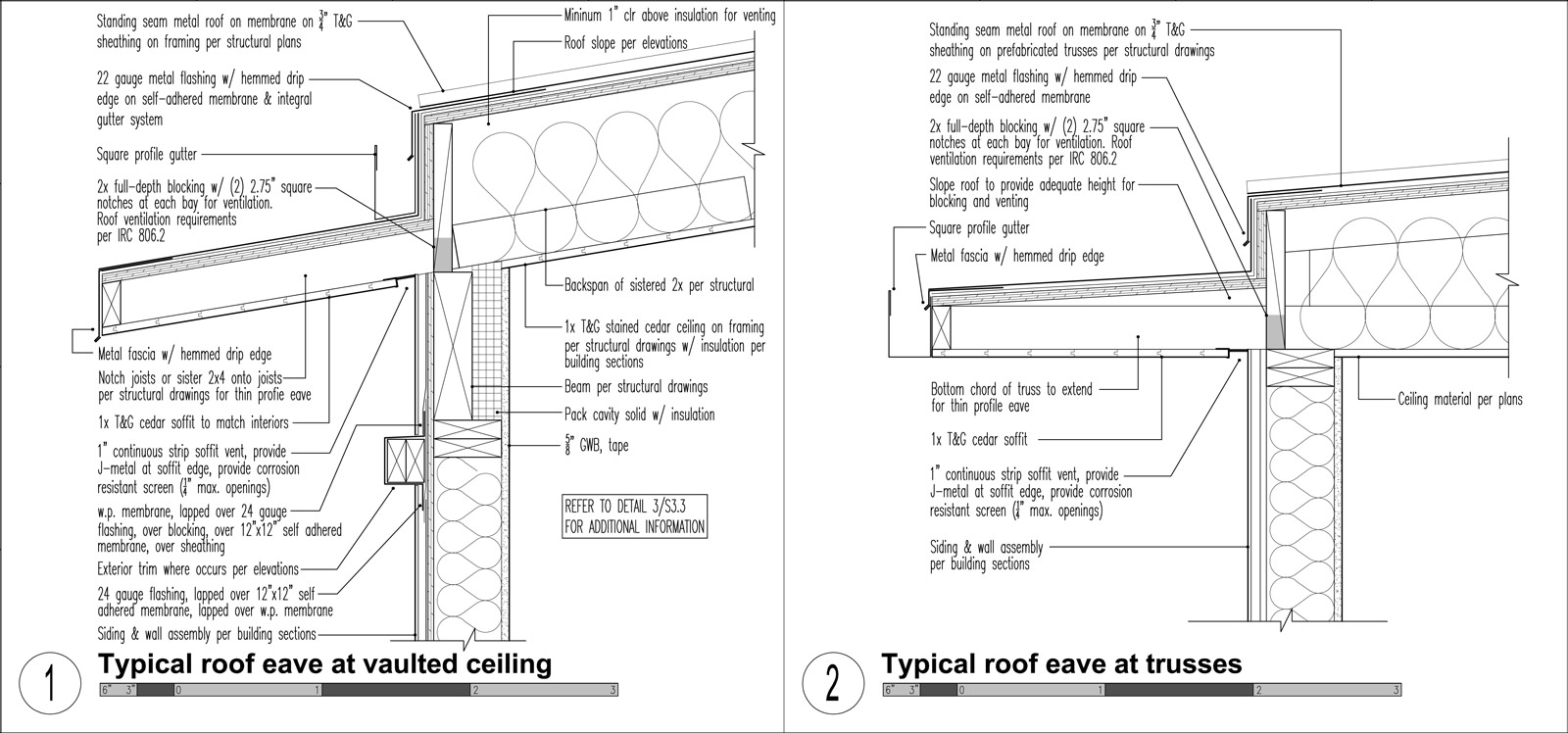
The west facing façade is further developed with a steel sunscreen above the main floor. This architectural element filters light, provides some shadow relief, and continues the horizontal line of the main floor roof.
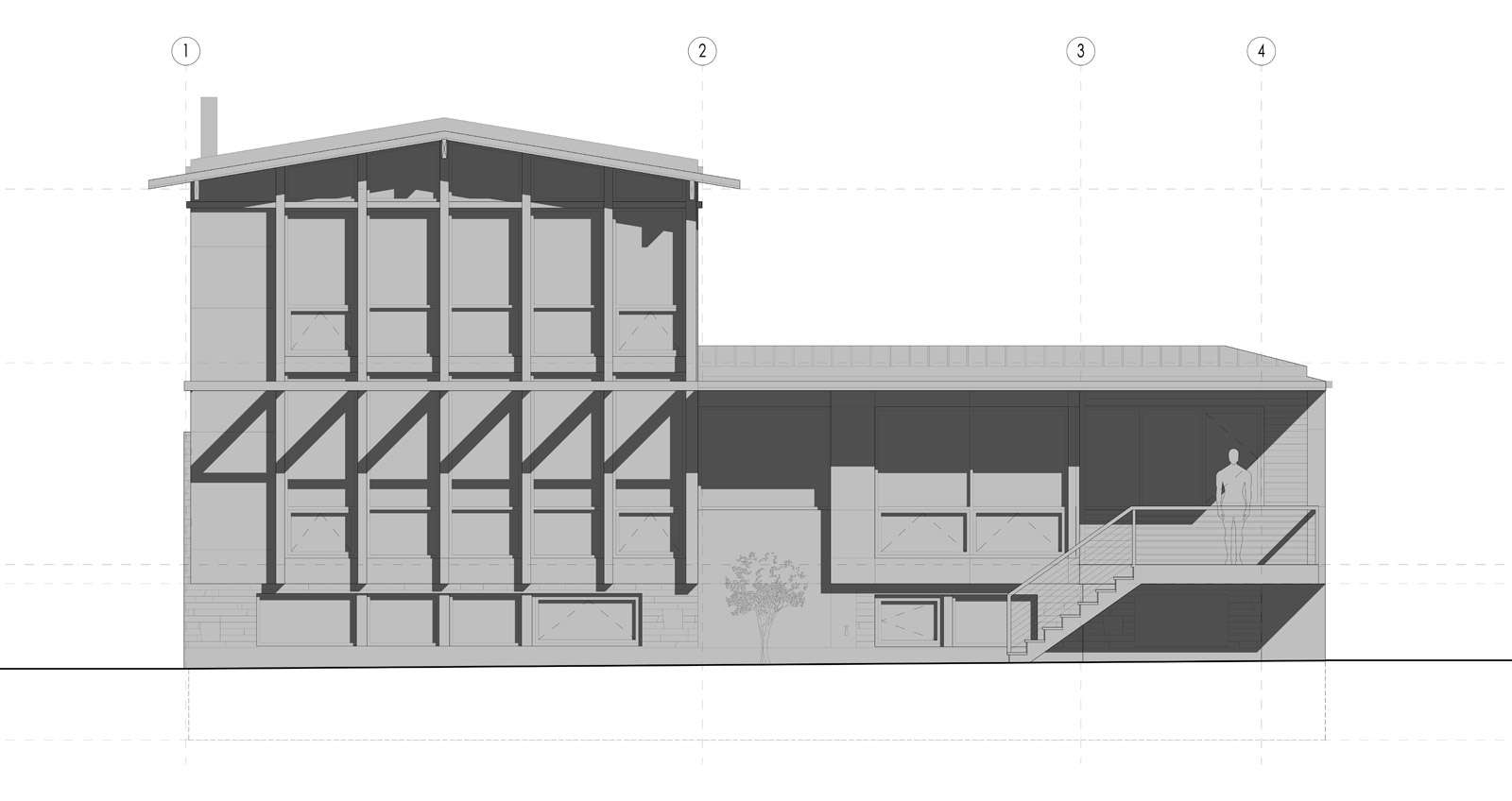
The harmony of a consistent horizontal line (sometimes referred to as a datum line) mentioned above is one of the most important features on a project currently in design. The aesthetic of the Magnolia Bluff House, shown below, relies on a horizontal band which encompasses the house. This line is formed primarily by a sunshade that is louvered above windows and solid above walls.
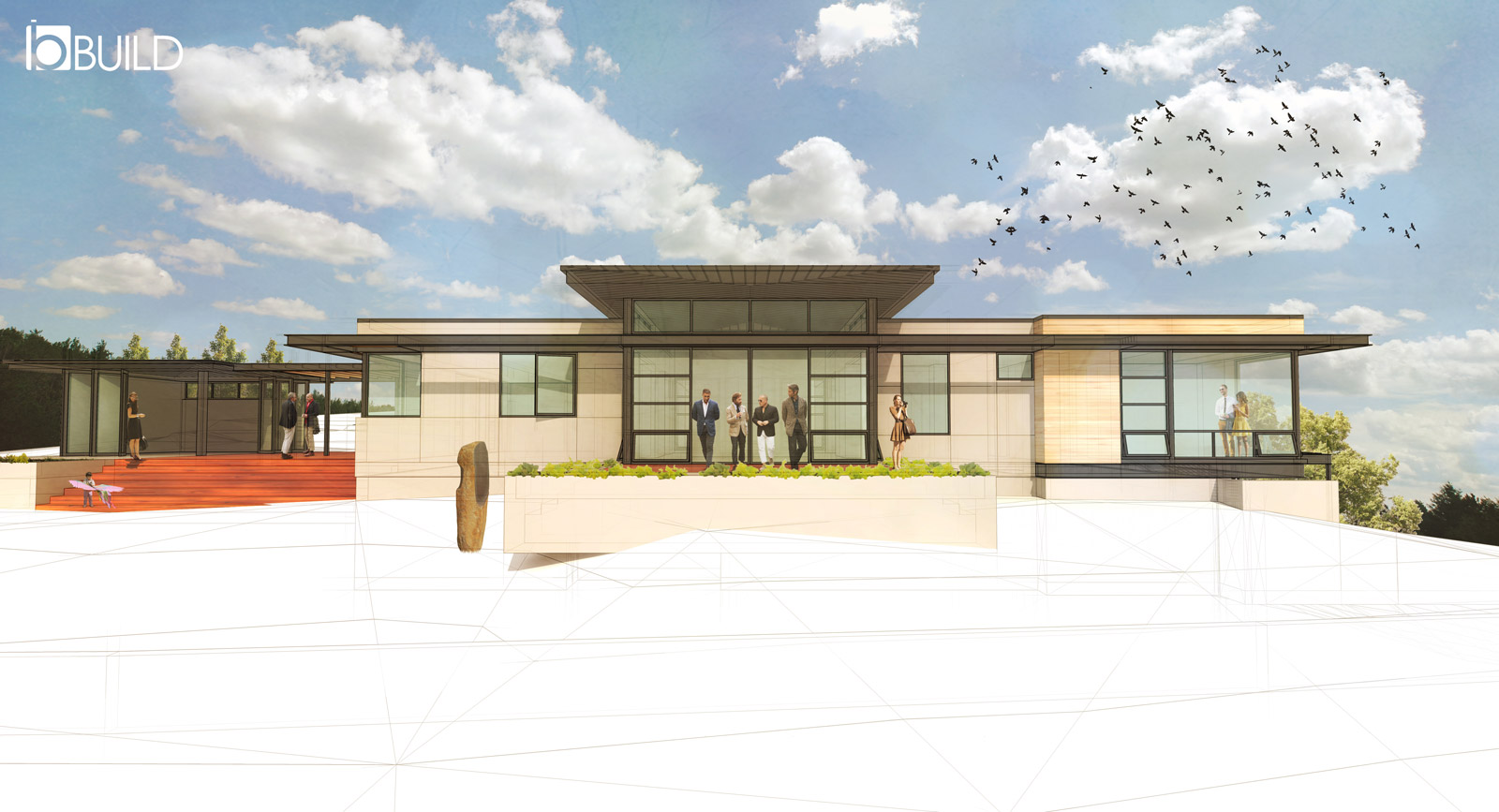
Because this sunshade is a structural cantilever, it requires smaller beams to tie back into the roof structure of the house. While a shed roof could technically do the job here, the entire system (in both look and function) is much more practical with a shallow sloped roof and parapets. This way the structural system which supports the sunshade can align perfectly with the roof structure.
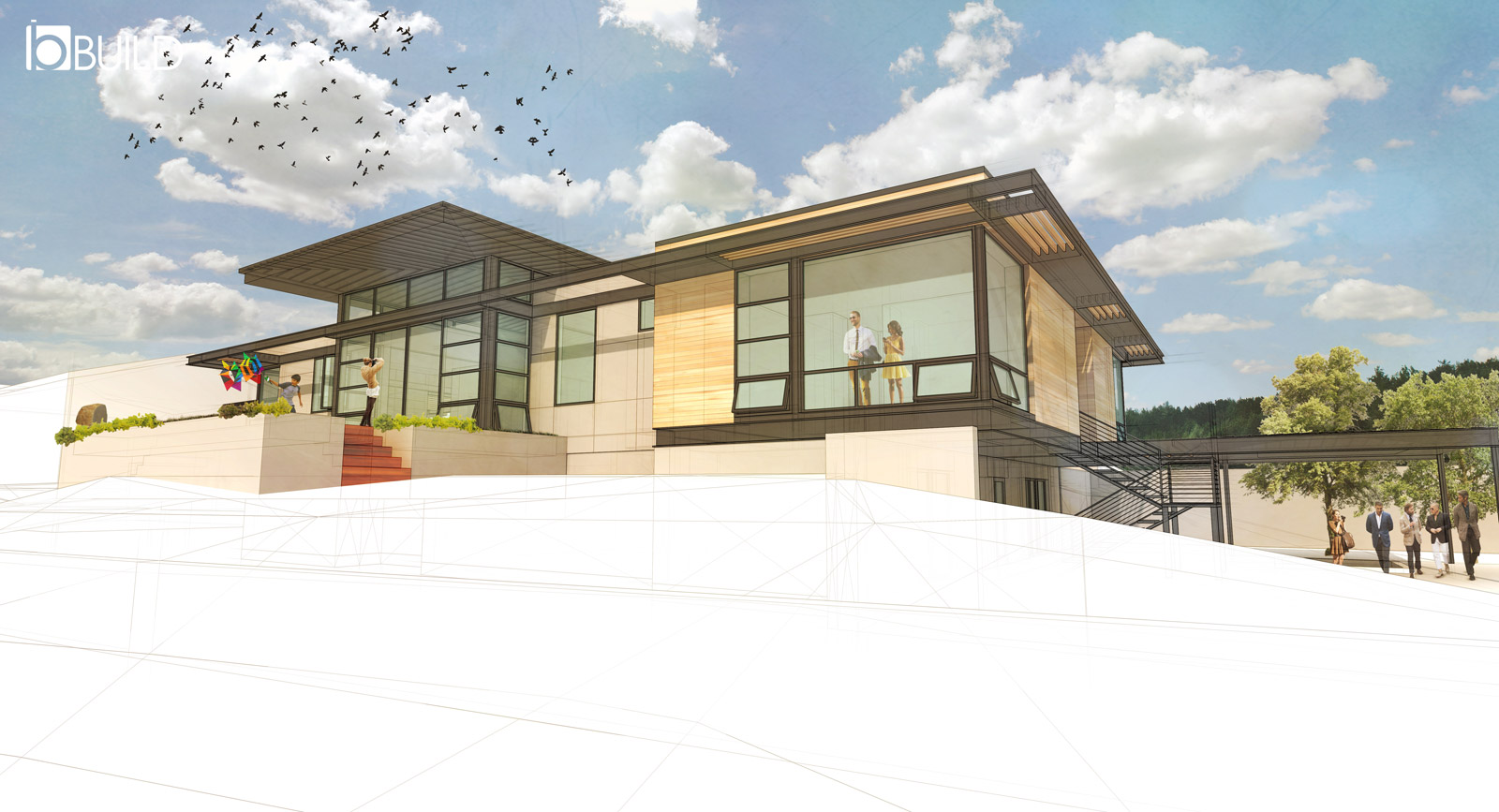
Sometimes there’s too much natural light and part of the roof structure’s job is to block, filter, or limit direct light. It feels odd saying this here in the gray, rainy Pacific Northwest, but in certain locations, the abundance of light gathered by a shed roof geometry would actually be a liability to a home. The Magnolia Bluff House uses a long, low hip roof at the upper volume to maintain shade throughout most of the day. By keeping the standing seam metal roof slope to a shallow 1” rise to 12” run, the roof is able to shed water and maintain a horizontal roof-line which compliments the sunshade discussed above.
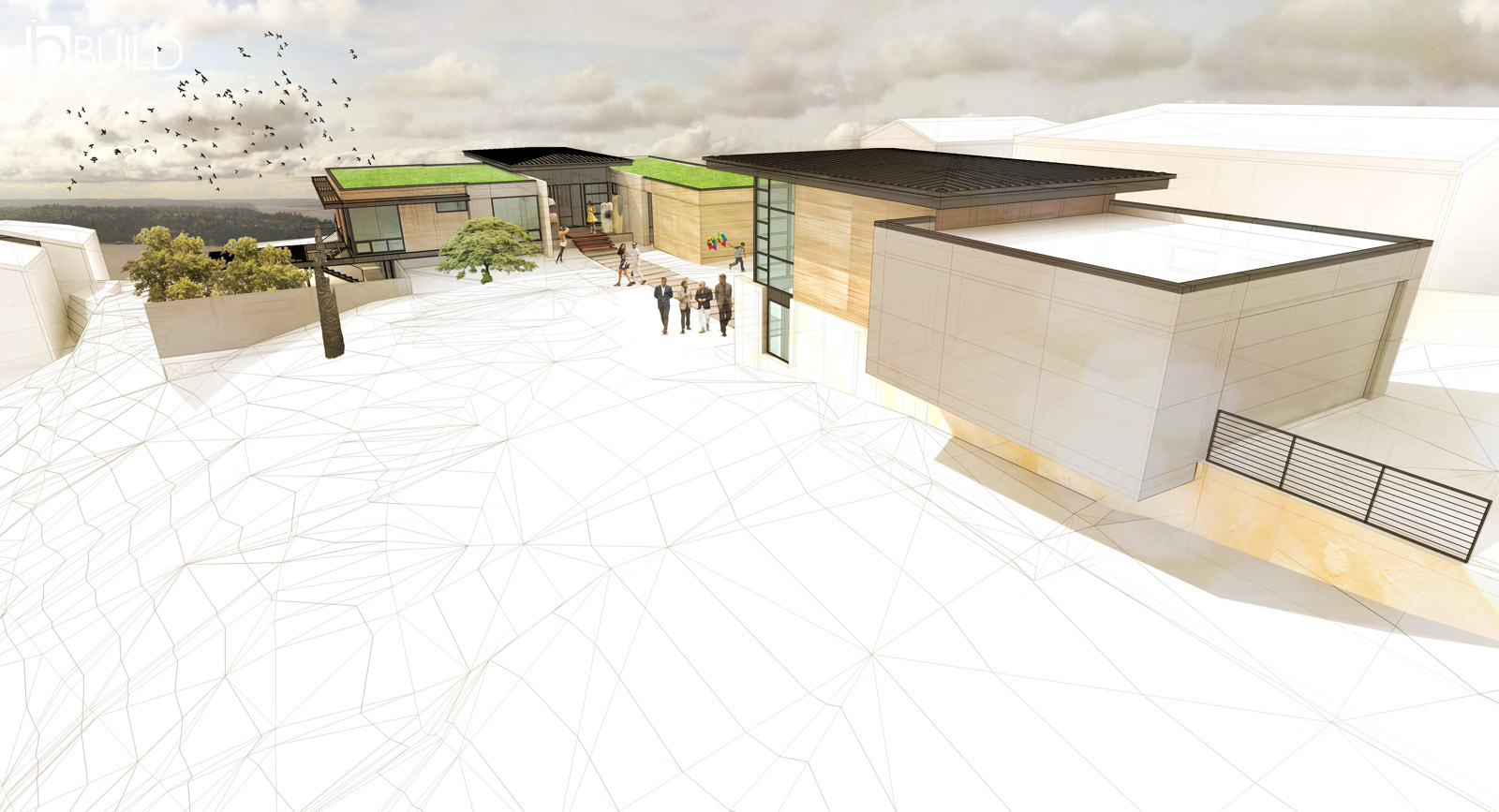
The 6’ roof eaves limit the heat gain of the residence while keeping direct sun off of the art inside. As there is already a generous ceiling height inside at this area of the home, a shed roof would cause more challenges than solutions. A similar roof strategy is used on the east side of the property, elevating a guest house to capture view without creating unusually voluminous interiors.
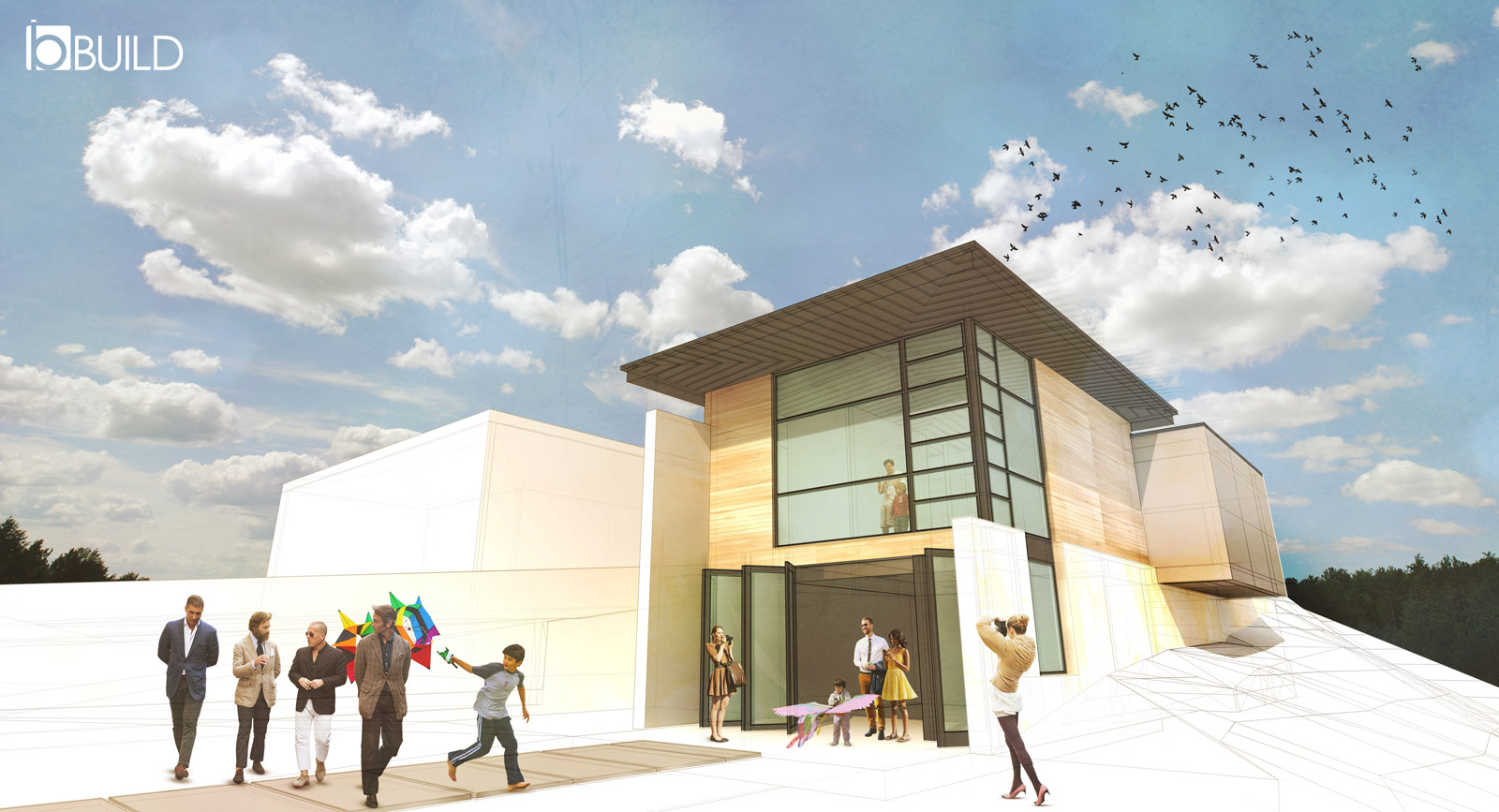
While we love the shed roof, you may see a few new roof strategies mixed in with our kit of parts in the future.
Cheers from Team BUILD





